How to Understand an EICR
Are you a landlord or homeowner that has recently had an EICR completed on your property? Struggling to understand the results of the EICR given to you?
Our guide to decoding the EICR will help you understand exactly what each part of the report is there for and what it means.
The Aim of an EICR
The aim of the EICR is to provide assessment of the CURRENT in-service condition of an electrical installation against the requirements of the CURRENT edition of wiring regulations, BS7671, at the time of the inspection. This is not dependant on the age of the installation. For example, an installation may have been fitted under the 16th edition of the wiring regulations but when the EICR is carried out it is carried out to the LATEST version of regulations (currently the 18th edition).
It is important to understand that the EICR and the process undertaken in completing it are not focussed on fault finding within an installation, although the information contained within can often be essential.
Reasons for an EICR
Typically, the report is for the benefit of the person ordering the work. It can, however, prove essential to any remedial work to be carried out, or any further inspections. There are multiple reasons that a report may be requested. Some of the more commonly encountered reasons in a domestic environment can be for insurance purposes (i.e. an insurance firm requires an EICR to be carried out before they will supply a policy), a mortgage lender (i.e. the lender requires an EICR to be carried out before the mortgage will be provided) or after flood damage (i.e. the EICR can give an indication of the extent of the damage). Remember that it is also recommended that new installations should have an EICR carried out at least every ten years on owner occupied properties, and more often for rentals.
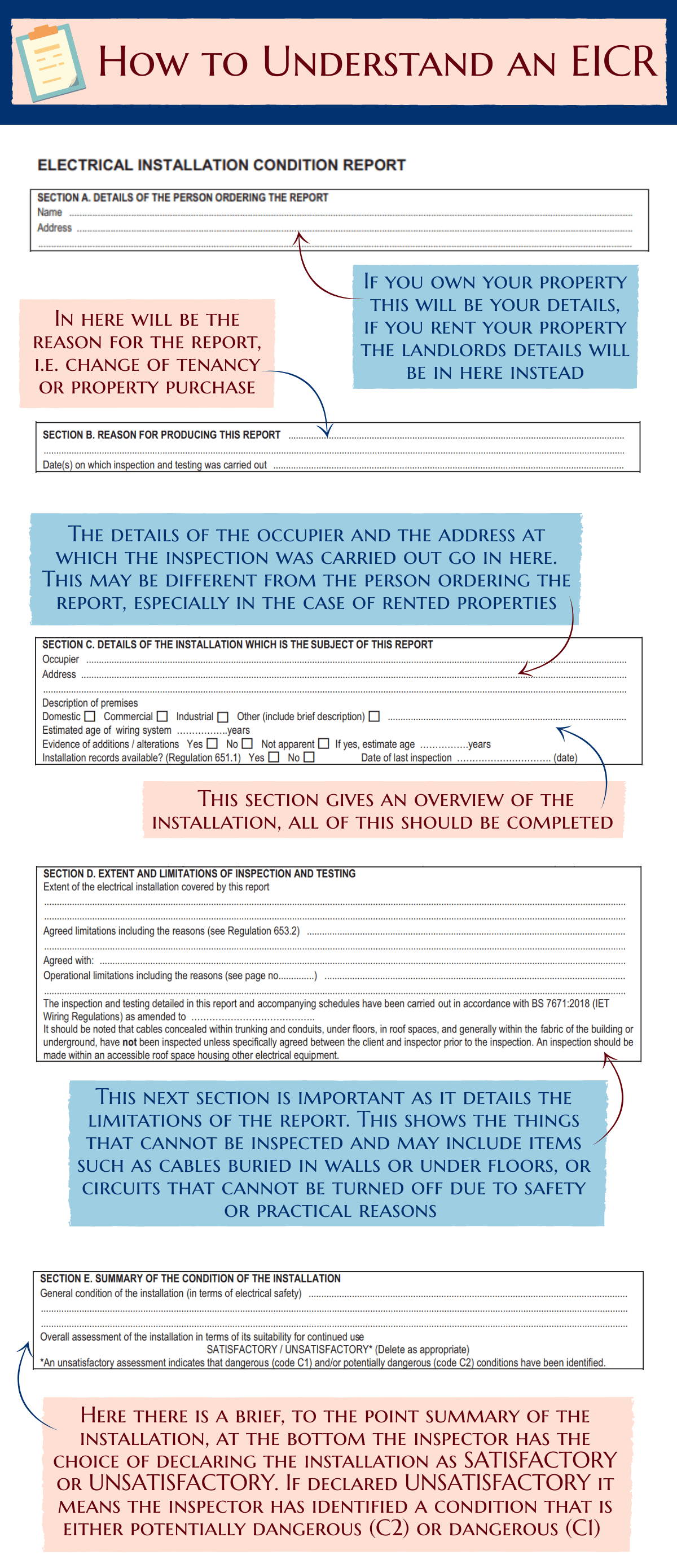
Information included in an EICR
The EICR has to include certain details including the extent of the installation as well as any LIMITATIONS that are on the inspection and testing process. Because of the impact that limitations can have, the following information needs to be included:
– Details of the limitations themselves (i.e. unable to comment on installation method of cables)
– Reason(s) for the limitation (in the above example cable buried in fabric of the building)
– The name of the person with whom the limitations were agreed (i.e. the person ordering the work)
As well as the above, the report is also required to include a record of the results of any testing and inspection that have taken place.
Once completed the report provides a formal declaration ‘that, within the agreed and stated limitations, the details recorded, including the observations and recommendations, and the completed schedules of inspection and test results, give an accurate assessment of the electrical installation at the time it was inspected’*
*Electrical Safety First Best Practice Guide 4
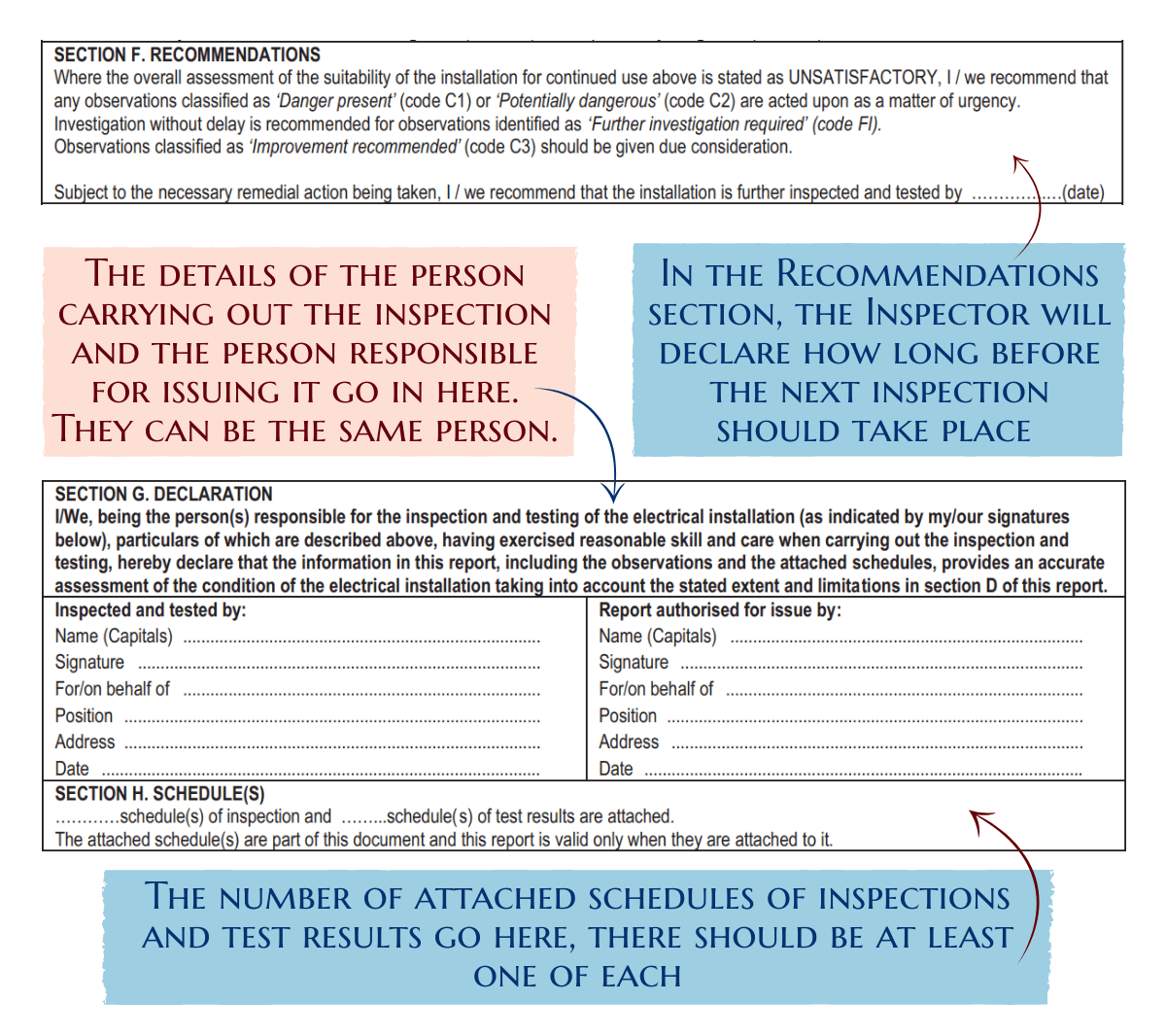
Periodic Inspection and Testing
To complete an EICR Periodic Inspection and Testing should be carried out. The main aim of Periodic Inspection and Testing is to detect and report on any factors either impairing or likely to impair the safety of an electrical installation.
When carrying Periodic Inspection and Testing the following should be covered:
– Identification of non-compliances with the current edition of BS7671 that MAY GIVE RISE TO DANGER
– Safety of persons against the effects of electric shocks and burns
– Protection of the property from damage that may be caused by fire or heat rising from the installation
– Confirmation that the installation is not deteriorated or damaged so as to impair safety
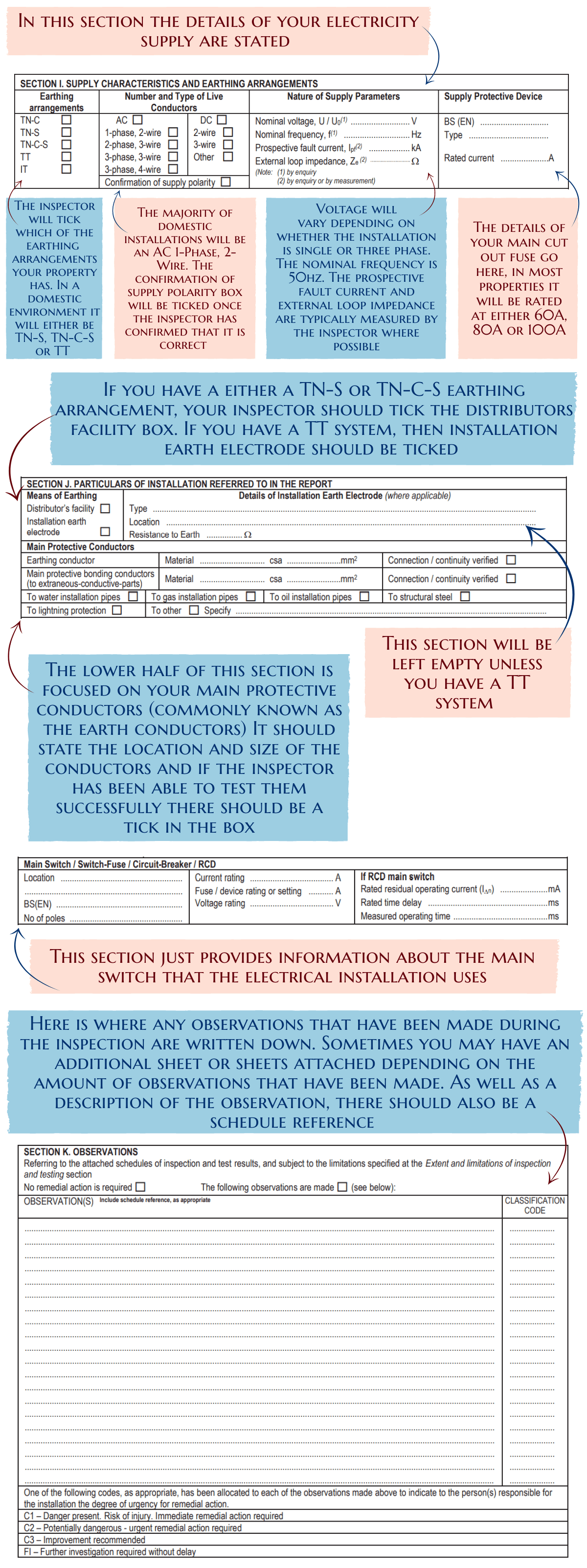
Observations
When carrying out Periodic Inspection and Testing, the inspector should identify any:
– Damage
– Deterioration
– Defects
– And conditions within the installation that may give rise to danger.
In addition to this any deficiencies to which rectification would improve the safety of the installation should be identified.
These observations should be noted in either the relevant section of the schedule of inspections or schedule of test results. Further information explaining the observation should be included in the ‘Observations’ section of the report. To re-iterate, the observations should be based on the requirements that are contained in the CURRENT edition of BS7671.
It’s important to understand that the observations are exactly that, they are just an observation of an issue at a particular point in time. Bearing this in mind, the observation should describe the issue and NOT describe what is necessary to put it right. An example of this would be the following; ‘C2 damaged face plate to switched socket outlet, downstairs RFC located in living room’. An example of what shouldn’t be done would be the following; ‘Socket in living room ring final circuit needs replacing’.
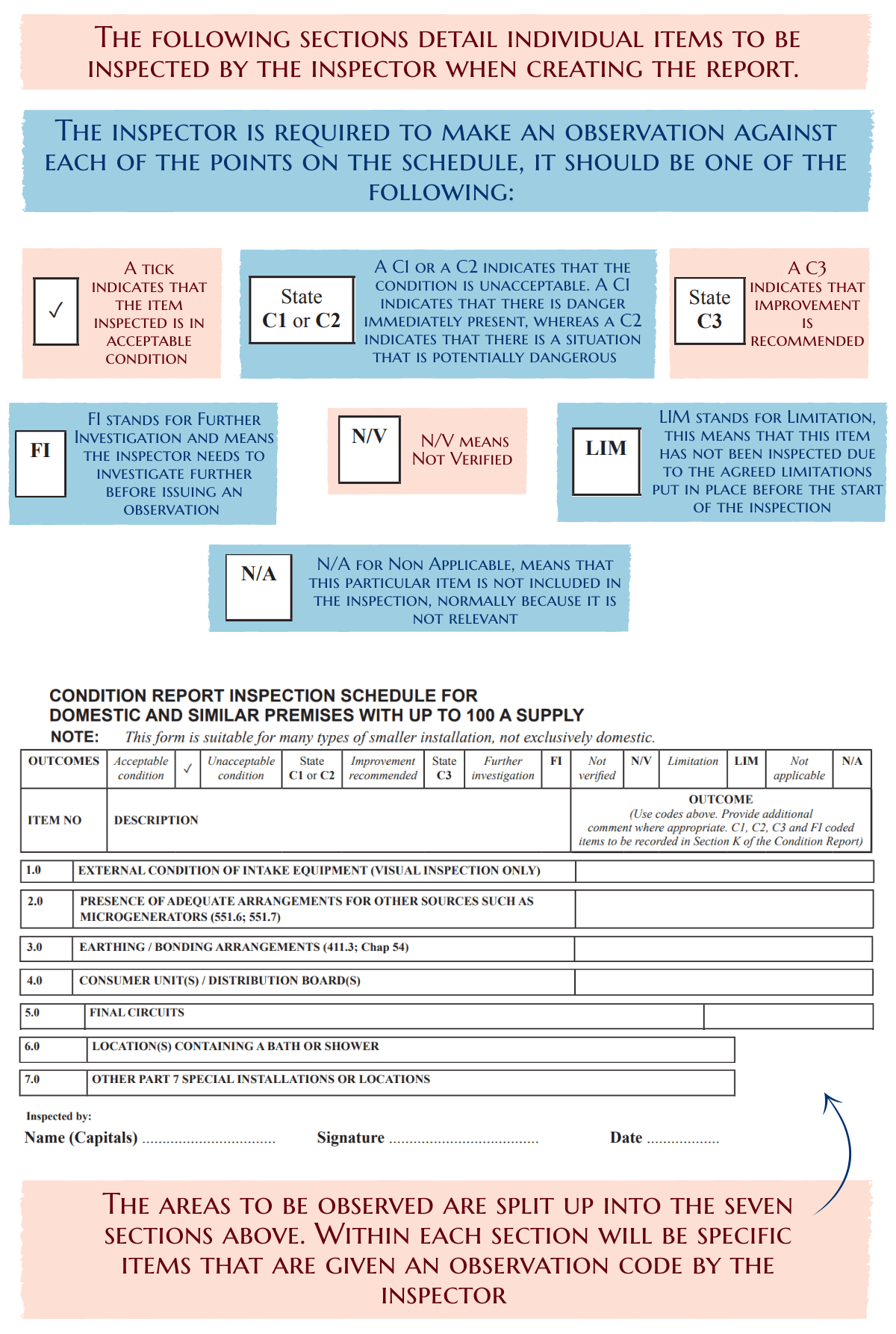
Classification Codes
Observations made during the Periodic inspection should be given one of the following classification codes depending on their severity:
– Code C1 – ‘Danger Present’ Risk of injury. Immediate Remedial Action Required
– Code C2 – ‘Potentially dangerous’ Urgent remedial action required
– Code C3 ‘Improvement recommended
– FI – ‘Further investigation required’
Each observation should only have ONE of the codes issued to it.
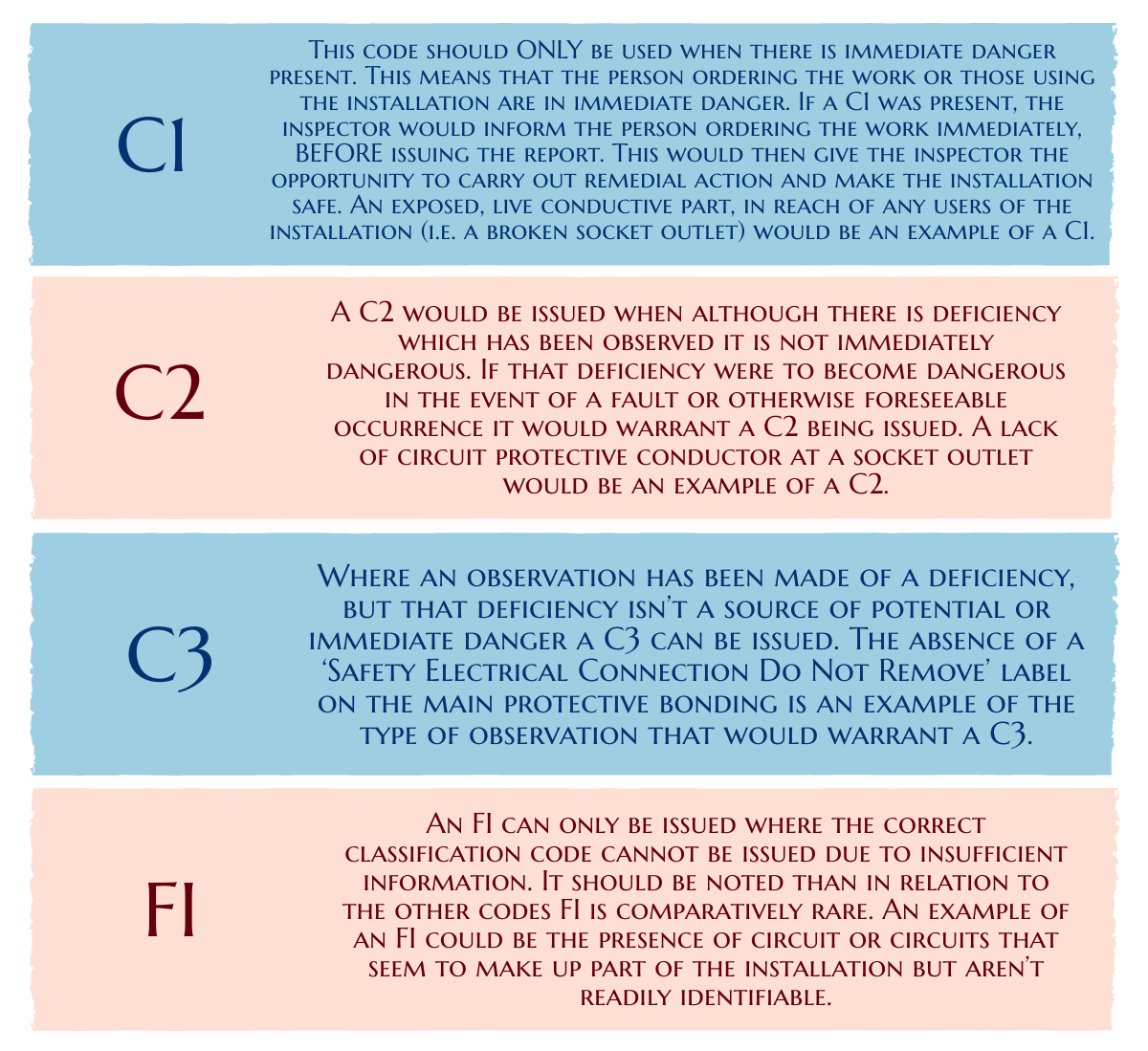
Schedule of Test Results
The last part of your EICR report will be the Schedule of Test results. The schedule of test results is filled out when periodic inspection work has taken place and it contains all the test results associated with the distribution and final circuits that have been inspected. Each circuit that has been tested should have all the circuit details listed, this doesn’t just include the name of the circuit, but also information such as the type of protective device covering it, whether there is an RCD protecting and the size of the conductors. The test results section is where the information gathered during the testing process will be entered. You typically wouldn’t expect an entry in every box. Some of the tests listed are only applicable to certain types of circuit. It may also be the case, that because of the limitations that have been in place during the EICR that certain tests where unable to be carried out.





